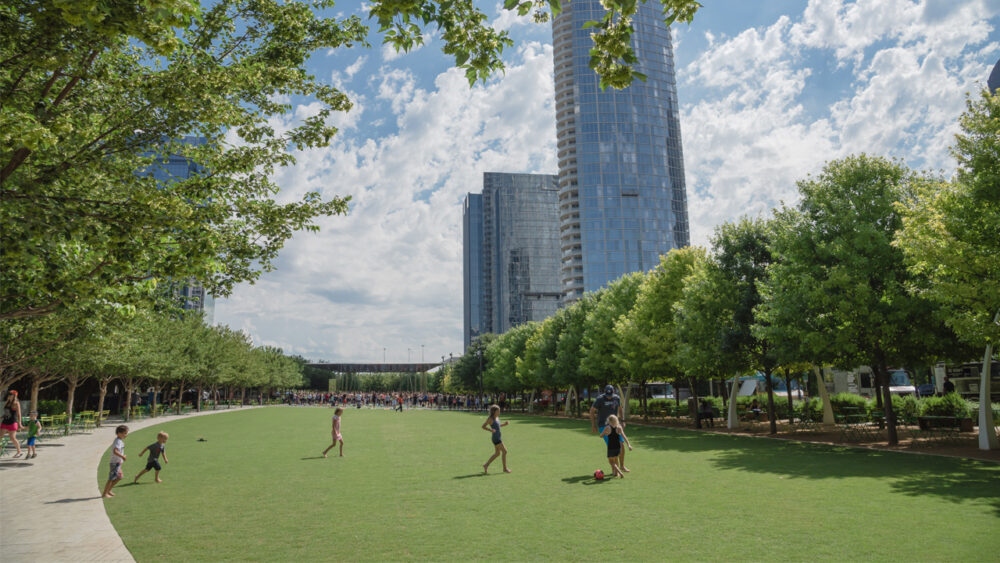A newly released rating from the Trust for Public Land (TPL) has graded Dallas’ park system as the second-best in the state of Texas.
Plano was the only Texas city to outrank Dallas, reported CultureMap Dallas.
The nonprofit’s annual ParkScore Index evaluates the 100 most populous U.S. cities based on five key criteria: park acreage, access, investment, amenities, and equity. Dallas earned a score of 61.2, ranking just behind Plano in Texas and placing No. 34 nationally.
Here’s how Dallas scored across each category, with each rated out of a possible 100 points:
-
Acreage (62 points): This metric measures median park size and the percentage of city land devoted to parks. In Dallas, 10% of the land is used for parks and recreation, compared to the 15% national median.
-
Access (73 points): More than eight in 10 Dallas residents live within a 10-minute walk of a park, exceeding the national average.
-
Investment (50 points): Dallas averages $155 per capita in combined public and private park funding over a three-year period.
-
Amenities (45 points): This score reflects the availability of popular features such as basketball courts, dog parks, splash pads, and playgrounds.
-
Equity (76 points): The city’s strongest category, this score evaluates how park space is distributed across racial, ethnic, and income groups.
In March, The Dallas Express reported that the Dallas City Council approved the $11.3 million purchase of a 1.84-acre property adjacent to the former Valley View Center. The site will be developed into a new public park in North Dallas, part of ongoing efforts to expand green space in underserved areas.
Nationally, Washington, D.C. topped the ParkScore Index, with 99% of its residents living near a park. Irvine, California, and Minneapolis, Minnesota, followed in second and third place, respectively.
Of the 100 cities analyzed, eight of the 25 most populous made it into the top 25. Major metros like Washington, D.C. (#1), San Francisco (#6), Seattle (#8), and Denver (#10) were all among the top 10 cities for park systems — demonstrating that urban density doesn’t necessarily mean fewer quality parks.
Dallas’ four-spot climb in the rankings is particularly noteworthy, given that the city’s population has remained relatively stable in recent years.


